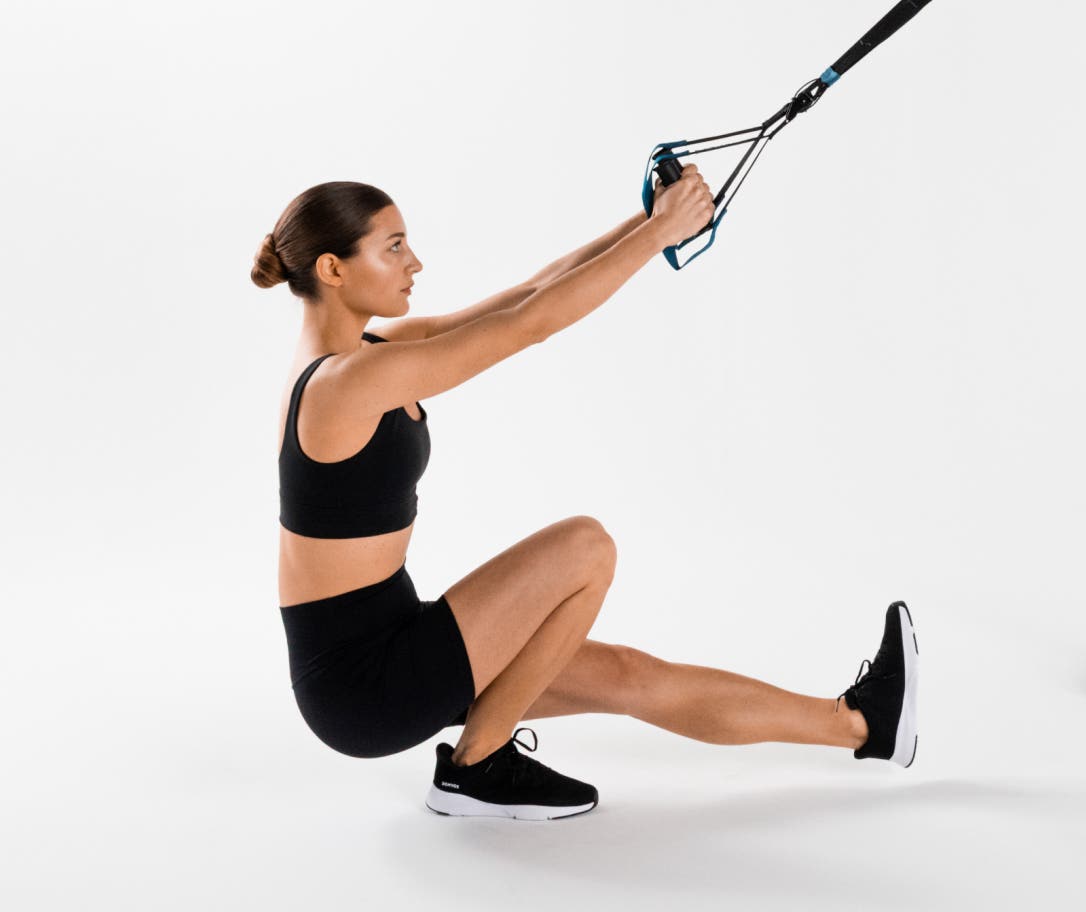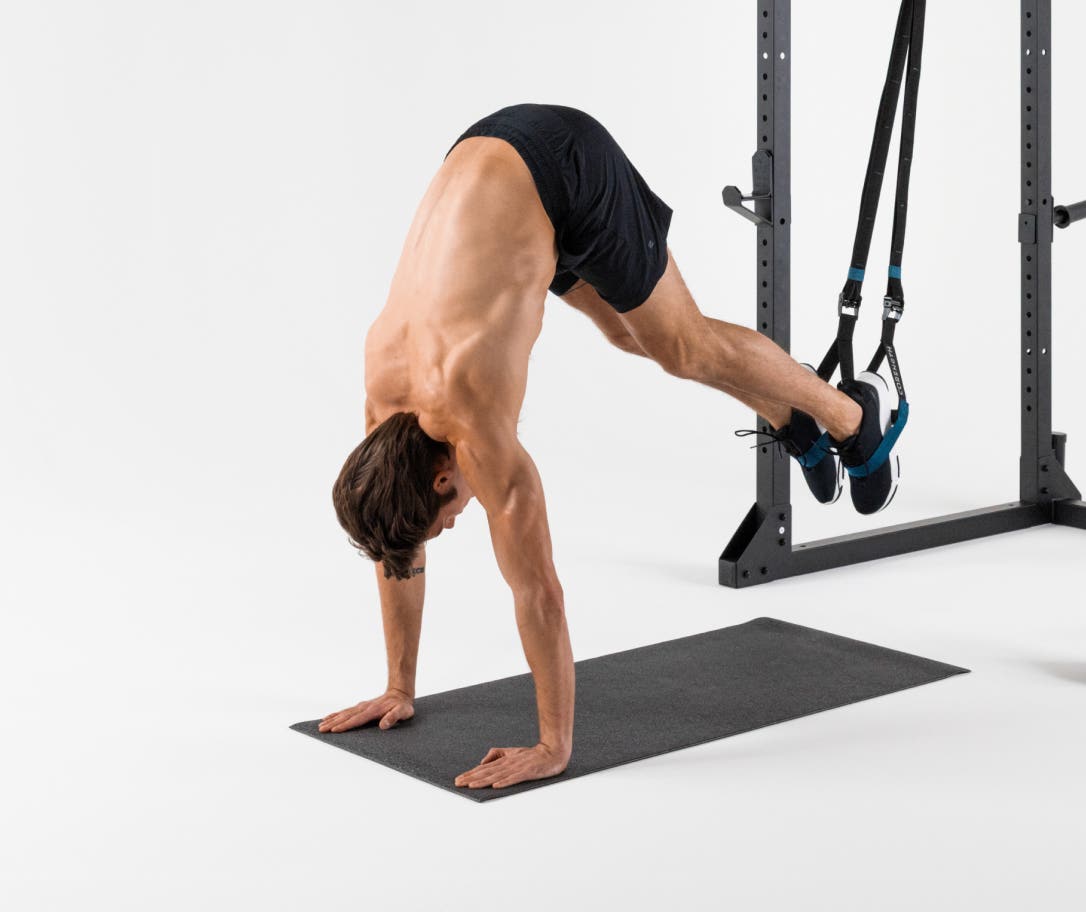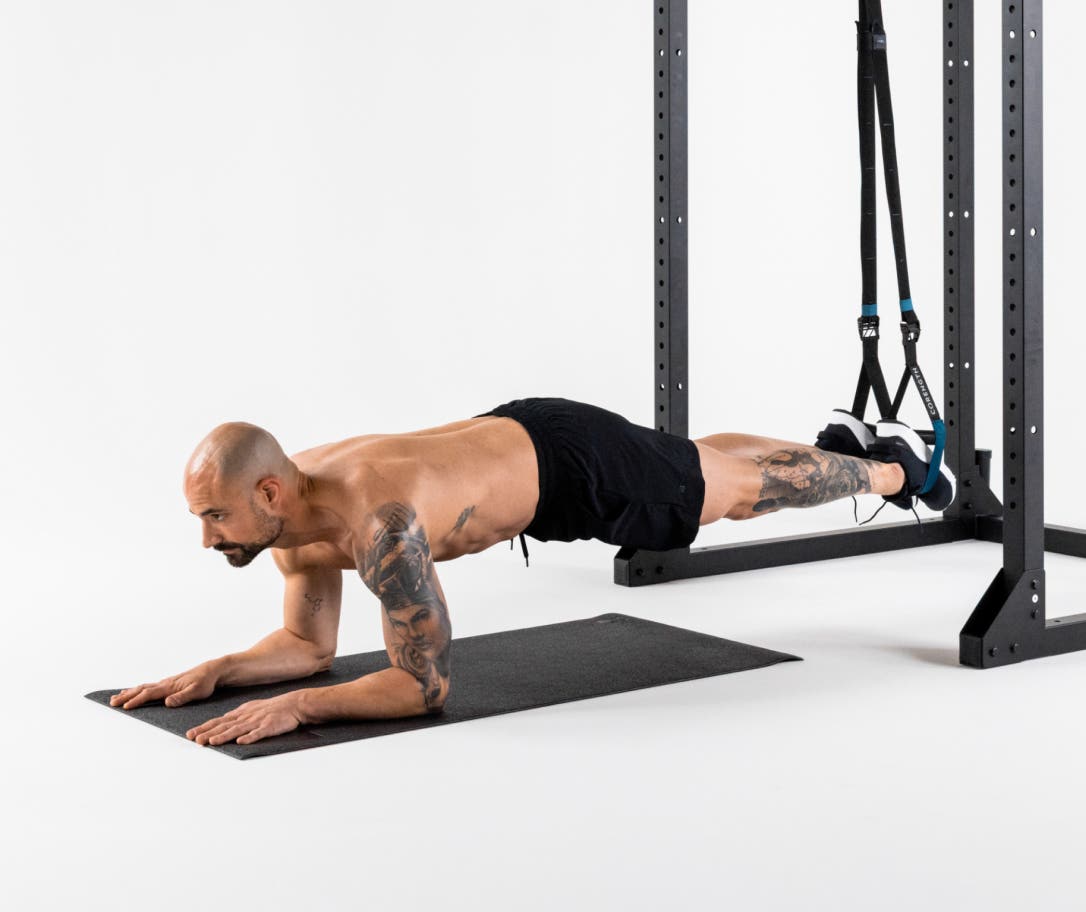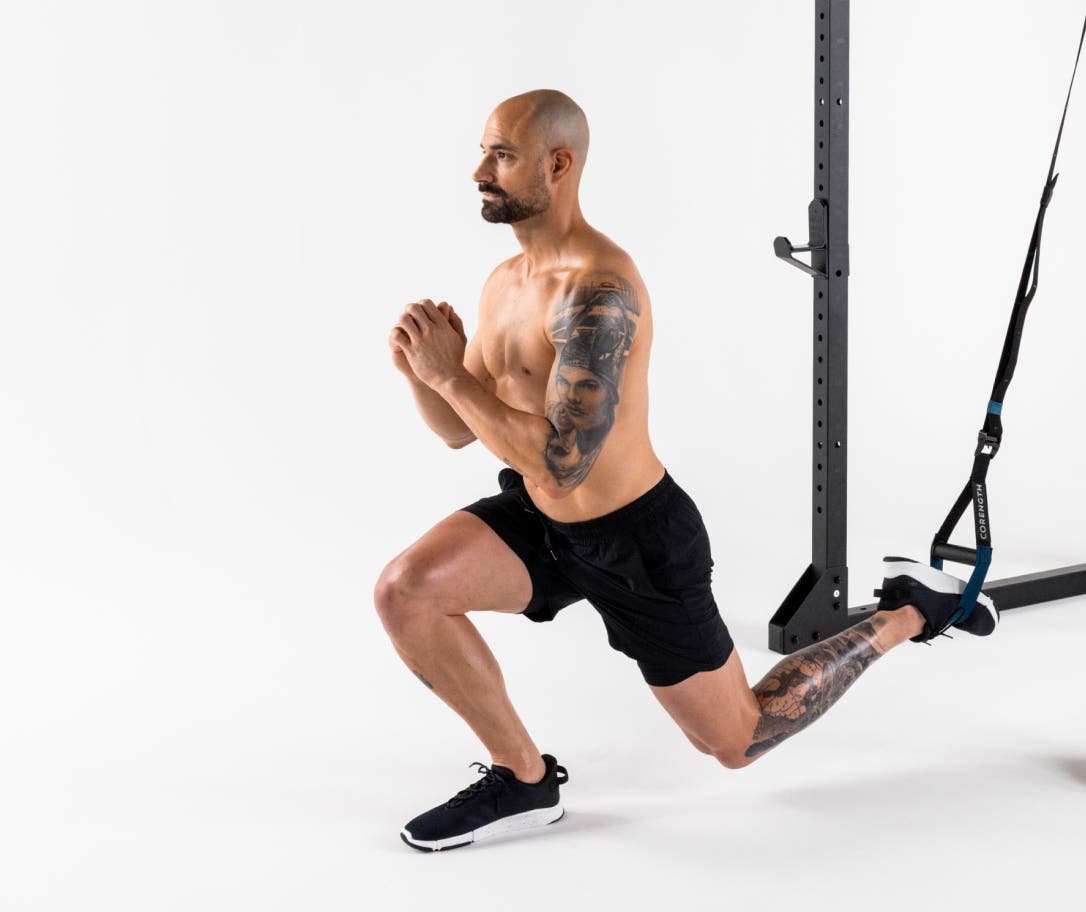Suspension trainers are fitness equipment that use bodyweight exercises to build strength, flexibility, and endurance. Adding them to your workout routine provides a dynamic way to challenge your muscles, engaging multiple muscle groups simultaneously and improving both strength and mobility.
What are suspension trainers?
Suspension trainers, such as the popular TRX suspension trainer system, consist of adjustable straps and handles, often suspended from an overhead anchor point, allowing for a wide variety of exercises targeting different muscle groups.
Basic components of a suspension trainer
A suspension trainer typically consists of a few key components:
- Straps: The long adjustable straps are the core of suspension trainers, allowing users to adjust the length depending on the exercise.
- Handles: Most suspension trainers come with comfortable handles for gripping with the hands. Some also feature foot cradles for lower-body exercises.
- Anchor point: The straps are suspended from a fixed anchor point, such as a door, wall, stable weight rack, or ceiling hook, allowing for a full range of motion during exercises.
- Adjustable buckles: These allow users to adjust the height of the straps to accommodate different exercises, difficulties, and body types.

Benefits of training with suspension trainers
Incorporating suspension trainers into your fitness routine can provide a wide range of benefits. Here's a closer look at how they can improve your overall fitness:
Improve strength by targeting multiple muscle groups
Suspension trainers effectively build strength by leveraging your body weight and gravity to perform exercises that target both major and minor muscle groups.1
Unlike isolation exercises, suspension training requires constant stabilization, keeping your core muscles engaged to maintain balance, which increases the effectiveness of the exercises.
Adjusting the angle of the straps allows for exercises that target specific muscle groups and compound movements or ones that challenge multiple muscle groups, such as Squats, Lunges, and Pushups, promoting muscle growth and strength development.
Boost flexibility, mobility, and stability
Since suspension trainers require you to maintain balance and engage your core muscles during each movement, they are excellent for improving flexibility, mobility, and stability.
They also allow you to deepen your stretches and perform mobility exercises that may be difficult with traditional equipment.
Suspension trainers allow for a full range of motion, improving joint mobility and increasing overall flexibility.

Low-impact and effective
Suspension training is low-impact compared to many traditional free weight exercises, making it an ideal option for individuals with joint issues or those recovering from injuries.
The exercises can be modified to suit different fitness levels and provide a safe, effective workout that doesn’t put undue stress on the body.
Other benefits
Suspension training is also a time-efficient way to achieve a full-body workout. It improves coordination, enhances muscular endurance, and can be easily scaled for any fitness level, from beginner to advanced.
It also helps increase mental toughness by challenging you to maintain balance, focus, and stability during exercises.2

Suspension trainers vs. bodybuilding
Suspension training and traditional weight training both have their advantages and disadvantages, but they serve different purposes. Bodybuilding typically isolates muscles and allows for progressive overload, making it ideal for increasing muscle size and strength.
Suspension training, on the other hand, is focused on targeting multiple muscle groups at once and focusing on balance, stability, and endurance. It offers a comprehensive approach to fitness and complements a weight training routine well.
However, suspension training might not be the best option for those who prefer heavy resistance training or want to focus solely on building large muscle mass.
How to use suspension trainers
When using suspension trainers, it’s important to prioritize safety and proper setup to ensure a productive and injury-free workout.3
Safety considerations
Before starting, ensure that the anchor point is secure and can support your body weight. Check the suspension straps for wear and tear to avoid accidents.
As always, maintain good posture and form during exercises to prevent strain or injury, especially in the back and shoulders.
Set-up
To set up suspension trainers, attach them to a strong, stable anchor point. If using a door anchor, ensure that the door is closed and securely locked.
If using a ceiling hook, make sure the hook is installed correctly to support your weight.

How to incorporate suspension trainers into your training routine
Suspension training can be integrated into any workout routine, whether you're a beginner or an advanced athlete.
Beginner exercises
- Suspension Squats: Stand facing the anchor point with the straps in hand. Lean back slightly, bend your knees, and squat while keeping your weight in your heels and maintaining tension in the straps. Return to standing. This exercise targets the quads, glutes, and core.
- Suspension Rows: Hold the straps with both hands and lean back, keeping your body straight. Pull your chest toward the straps by bending your elbows, then return to the starting position. This works the back and biceps.
Intermediate exercises
- Suspension Lunges: Place one foot in the suspension cradle and step back into a lunge position. Push through the heel on the floor to return to standing. This targets the glutes, hamstrings, and quads.
- Suspension Chest Presses: Set the straps to an appropriate height, place your hands in the handles, and perform a chest press while keeping your body aligned. This works the chest, shoulders, and triceps.
Advanced exercises
- Suspension Pistol Squats: Stand facing the anchor point with the straps in hand. Shift your weight to one foot and lean back slightly, bend your knee, and lower down into a squat while keeping your weight in your heel. Keep tension in the straps and use them for assistance as you lower down and return to standing. This advanced movement challenges the quads and balance.
- Suspension Plank: Place your feet in the suspension cradles and hold a plank position with your forearms on the ground. This engages the core and stabilizing muscles.

Common mistakes to avoid
- Having a relaxed posture: Always ensure your body is in the correct alignment. Improper form can lead to unnecessary strain, particularly in the shoulders and back.
- Over or underextending: Don’t overextend your body during exercises, as this can put excess stress on joints (especially the lower back). Similarly, don’t shorten the range of motion of the joints intended to move, as it can reduce the effectiveness of the exercise.
- Allowing slack in the straps: When performing the exercise, there should be constant tension in the straps. Adjust your position to the anchor point to ensure the straps maintain this tension throughout the movement.
Using suspension trainers to achieve your goals
Suspension trainers are highly versatile and can help you meet specific fitness goals. For weight loss, they provide high-intensity, full-body workouts that burn calories and improve metabolic rate.
For muscle gain, suspension training allows you to progressively overload muscles and enhance strength.
For general fitness, suspension trainers offer functional movements that improve balance, flexibility, and endurance.

Let’s recap
Suspension trainers are an excellent addition to any fitness routine, providing numerous benefits such as increased strength, flexibility, and mobility. They are low-impact and effective, offering a total body workout that targets multiple muscle groups simultaneously.
Incorporating suspension trainers into your routine can help you achieve your specific fitness goals, whether you aim to lose weight, gain muscle, or simply improve overall fitness. So, strap in and give these powerful workout tools a go!
Sources
[1] Lopez, D., & Richards, P. (2020). Bodyweight training: A review of the effectiveness of suspension trainers. Strength & Conditioning Journal, 42(2), 12-18.
[2] Watanabe, H., & Oshima, Y. (2019). The role of suspension training in enhancing balance and flexibility. Journal of Sports Science and Medicine, 18(4), 237-245.
[3] Williams, L., & Lee, M. (2021). Suspension training vs. traditional weightlifting: A comparison of benefits and drawbacks. International Journal of Sports Performance, 15(5), 101-107.